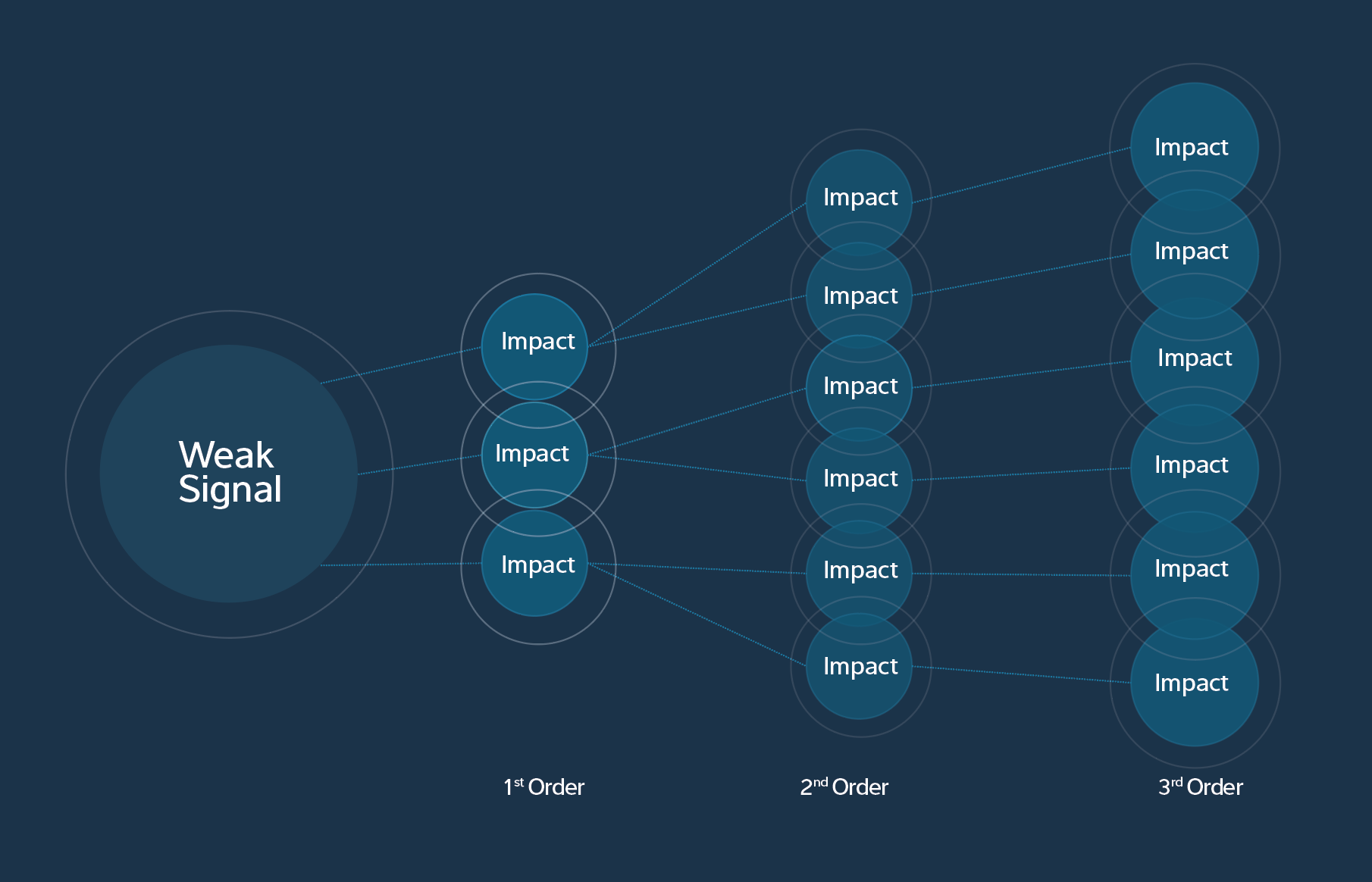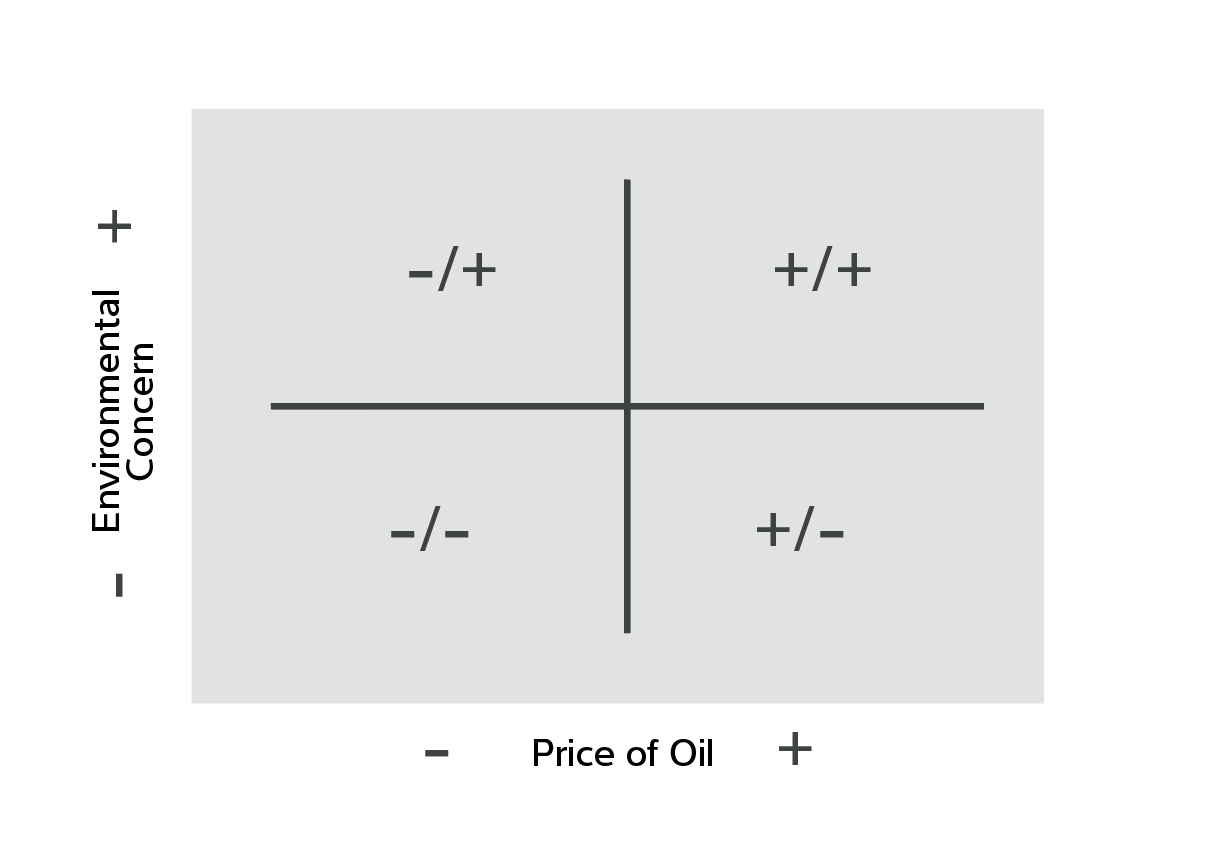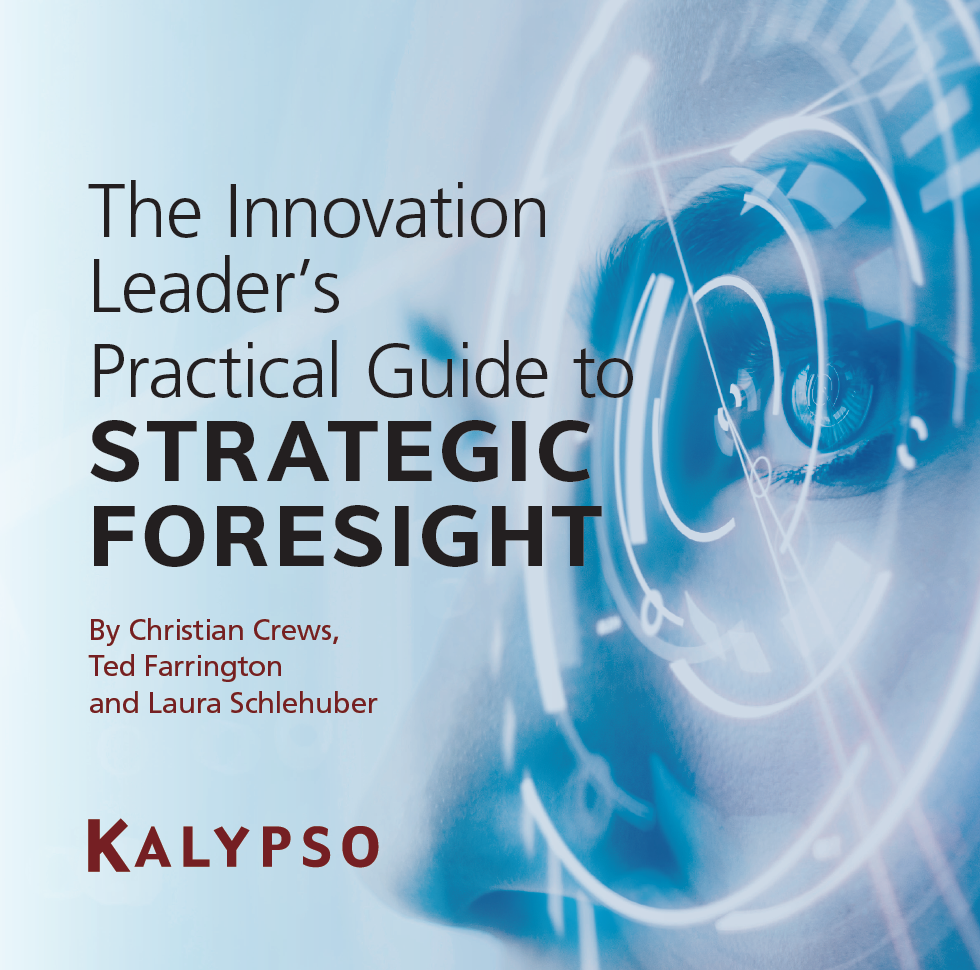Strategic Foresight – Leading Practices for the Anticipate Phase
Note – this post is part of a series on using strategic foresight to influence longer-range innovation investments. The full Innovation Leader's Guide to Strategic Foresight is available for download.
Strategic foresight enables companies to build a proprietary view of the future to drive breakthrough innovation. Through three distinct phases – Discover, Anticipate and Plan – companies can create thought-provoking, unexpected scenarios of the future, with proprietary views not shared by their competitors.
The Anticipate Phase: Looking Ahead
In the Anticipate phase, we forecast trends into the future and analyze how they will interact to create novel future environments.
By definition, everything identified during the Discover phase was found by looking around today’s world. But the building blocks of a ten-year-out scenario must be the ten-year forecasts and implications of the trends and weak signals found today. This is typically accomplished by one of two methods; implications trees and technology forecasting.

During implications tree workshops, participants suspend any debate about whether or not the trend or weak signal will take off, but rather ask what would be some 1st, 2nd and 3rd order implications if it did. One trend or weak signal can yield 6-8 possible implications in the project’s time horizon as shown in the figure to the right.
More formal technology forecasting methods can be used for trends and weak signals deemed of special importance. Expert panels are often asked where they see the trend or signal in ten years. What is required for that prediction to come true or be prevented are great follow-up questions that help later in the Plan phase. Simple extrapolations, Delphi methods, technology roadmaps and trend correlation are other technology forecasting methods that can be used here.
With up to 50 original trends and weak signals, and 6-8 implications for every one brought into the Anticipate phase, the results must be culled again to keep the project manageable. The focus question is used once more to prioritize which future implications are taken forward.
Creating the Scenarios
The real heavy lifting of any foresight project occurs at this point, where all the previous results, combined with future implications of trends and weak signals, are used to develop holistic future scenarios. Three types of scenarios are commonly seen, with the last two preferred for innovation-related projects.

Simplest is the deductive scenario shown in to the left. The question might be “how should my automobile company be investing its R&D dollars?” Two key areas of uncertainty are identified, such as the price of oil and level of environmental concern for the consumer. These form four possible combinations and the previous results are used to describe those futures. The key feature about deductive scenarios is that the space of the scenarios is defined at the beginning of the exercise.

Inductive scenarios are developed by seeking out potential interactions among future extrapolations of known trends and weak signals of potential future trends or events. Then, systems thinking methodologies are applied to build open and closed loop systems from these future interactions. Finally, systems with common elements are combined, as shown to the left, to complete the inductive scenario.
These scenarios are more difficult to construct, but they are a better representation of how the world really works, where seemingly unrelated trends and events find some way to interact and create unexpected futures. The key feature of an inductive scenario is that the space of the scenario emerges from the work; you don’t know here you’ll end up when you start. They are favored for innovation-related projects because every node around the system can be considered a point to intervene with a new product, service or business model to take advantage of, or influence, that future.
The combination deductive-inductive scenario offers the best of both scenario types. Suppose the project is related to innovation on some level; so inductive is the clear choice. The deductive-inductive combination makes sense when there are also major areas of uncertainty; like the price of oil or who will win an election. The result is the two-by-two deductive matrix, but with a different inductive scenario in each quadrant.
Incasting Workshops
Once scenarios are complete, incasting workshops ask teams to not debate a scenario, but rather assume it will come to pass. Then living in that future, answer the question - “What does my organization need to do in order to be successful in this future?”
And this is done separately for each scenario created.
The results of the Anticipate phase are:
- Quantitative and qualitative forecasts on trends identified in the Discover phase.
- Scenario Planning: Narratives of alternative futures that will impact the strategic business environment, built from system frameworks. The report includes external indicators to monitor that confirm or deny assumptions about the future in each scenario.
Once the Anticipate phase is complete, Plan Phase is used to prioritize opportunity areas, ideate new products, services, and experiences, and provide external landmarks for ongoing portfolio management.
Learn More

Strategic foresight enables organizations to build a unique perspective of the future, driving market entry at the right time with differentiated products and services. But not all foresight approaches are created equal.
Download the Innovation Leader's Guide to Strategic Foresight to learn more



